Mughal Architecture along the GT Road
Stepwells and Tanks
The arid stretches of India’s north incentivized the creation of stepwells (Baolis) to provide water security for the region’s populations. Today, the rich ornamentation and history of Baolis have emerged as a source of cultural and historical pride for the subcontinent, with sites like Rani Ki Vav in Patan, Gujarat, even earning a coveted selection as a UNESCO world heritage site.
Mughal stepwells were predominantly built along an octagonal or circular well with a flight of steps descending to reach the water level, in much the same way they had been built for centuries prior, albeit with much more simplistic Mughal-style ornamentation and construction. While many of this era’s stepwells have fallen into ruin as they have in Sarai Amant Khan and Sarai Doraha, stepwells like those in Kaithal demonstrate a brick-centric construction adorned with simple designs seen in the presence of architectural motifs bearing pointed archways reminiscent of pishtaqs, themselves iconic of Mughal sites, rather than the intricately carved sandstone walls and pillars of Indigenous stepwells like those seen in Rani Ki Vav or Modhera.
Deep water tanks were also constructed along the route for travelers, with some of the best-surviving examples seen in Raja Taal and Taraori. These storage-oriented tanks were primarily fed by collected rainwater or channels from nearby streams, and were better able to supply large caravans and local agriculture with fresh, much-needed water across the semi-arid stretches of road between Lahore and Agra. The Tanks were typically built in a large rectangular shape and surrounded by brick or stone walls, sometimes including steps(ghats) either surrounding the central tank or at the center of each side. Tanks and Stepwells were commonly found in the courtyard of or near Sarai complexes to provide drinking and bathing water for their guests, such as in Sarai Doraha in Ludhiana, Punjab.
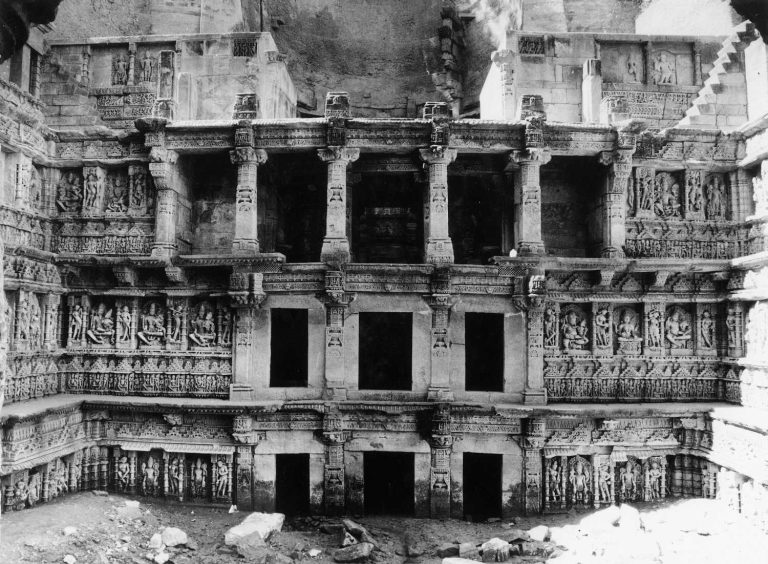
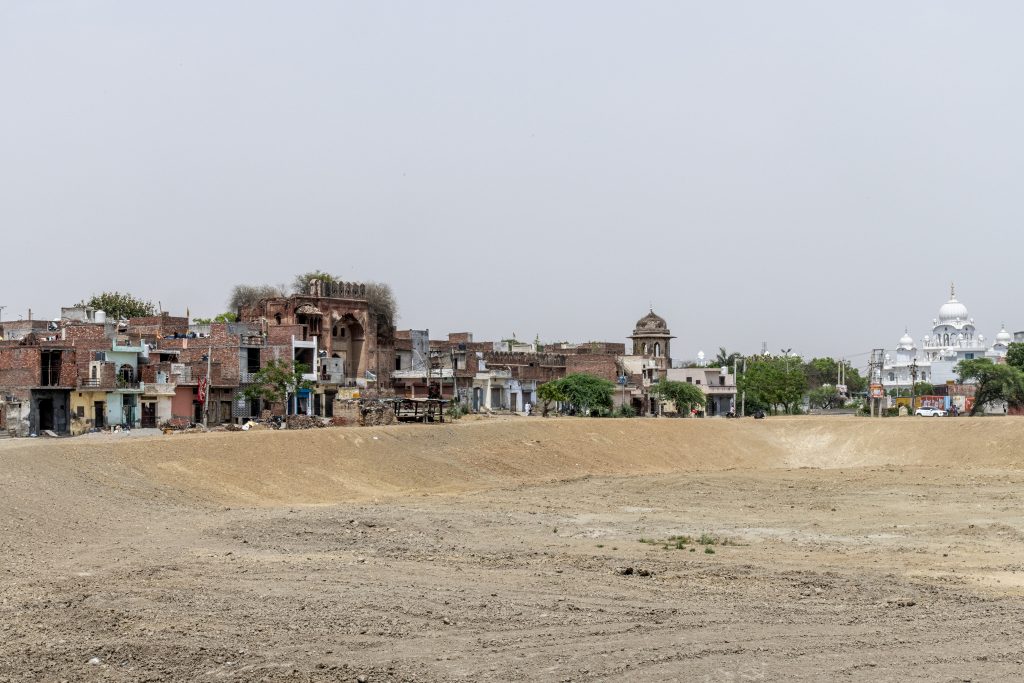
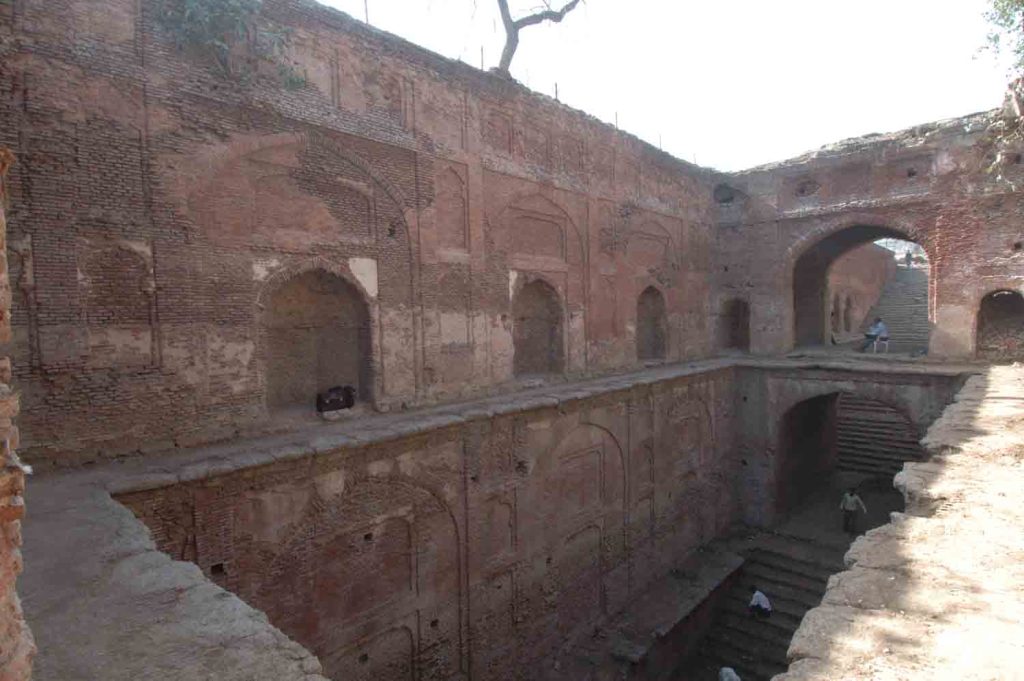


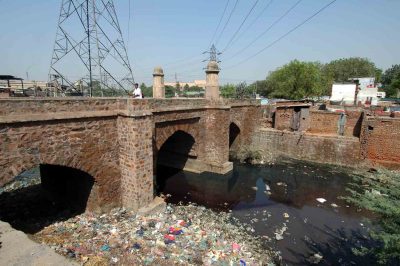
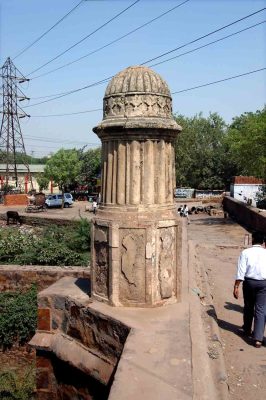
Bridges
Bridges in India are first mentioned in Sanskrit texts like the Arthashastra from as far back as the 3rd century B.C., but the earliest surviving bridges in India only date to the ninth century. As Islamic empires swept across the subcontinent, these new rulers would also bring architectural advancements that enabled the replacement of stone beam and triangle-shaped corbelled openings of pre-Mughal bridges with more resilient pointed-arched bridges made of brick. The construction of bridges would reach its pinnacle during Jahangir’s reign when he constructed several new bridges and repaired many of the older ones to ensure that his highway system would function efficiently. The bridges built by the Mughals were only built to cross smaller streams; no permanent bridges were constructed across North India’s vast major rivers, which were crossed on boat-supported bridges and ferries. These brick-built Mughal bridges commonly carried a similar design to their caravansarais and tombs, with river-spanning pointed arches, fresco paintings, and turrets flanked by minars.
It is because of these reinforcements that sites like the old Badshahi bridge, built by Sher Shah Suri along the royal road, survive and demonstrate the Mughal style with their plastered minar-like turrets and pointed arches. While most Mughal bridges have been swept away by time and India’s monsoon floods, some of these bridges that remain are of such good construction that they are still in use. A bridge at Sarai Khwaja in Faridabad, Haryana, remains as a walkway for pedestrians and two-wheeled vehicles to cross a stream that has since been converted into a sewage basin.
Bibliography
Dar, S. R. 2000. “Caravansarais Along the Grand Trunk Road in Pakistan.” In The Silk Roads: Highways of Culture and Commerce, 158-178. Paris: UNESCO Publishing/Berghahn Books.
Parihar, Subhash. 2008. Land Transport in Mughal India: Agra-Lahore Mughal Highway and Its Architectural Remains. 87-88.
Parihar, Subhash. 2009. “Travelling with the Mughals: A Survey of the Agra-Lahore Highway.” Marg 60 (4).
Singh, Surinder. 1998. “River Crossing in North Western India During the Mughal Times.” Proceedings of the Indian History Congress 59: 434–43. http://www.jstor.org/stable/44147011.
Sinha, Vandana. 2019. “Documentation of Indo-Islamic Architecture Built Along a 16th-Century Highway.” Art Libraries Journal 44 (3): 98–107. https://doi.org/10.1017/alj.2019.14.